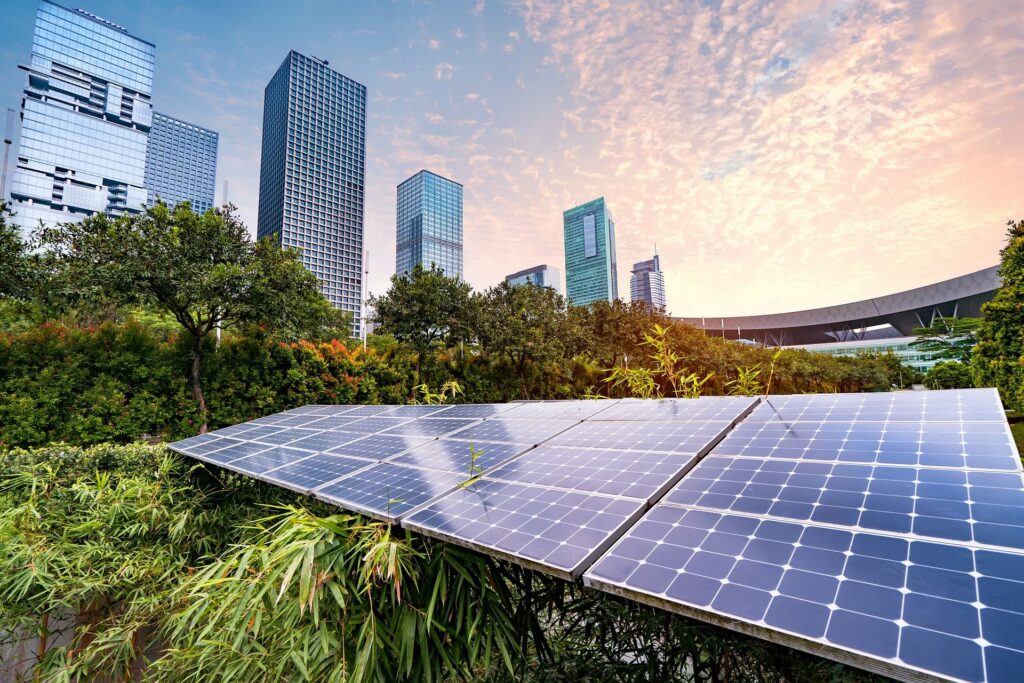
Imagine solar-powered cities where every streetlight, home, and business runs solely on the power of the sun. No fossil fuels, no power outages, just clean, renewable energy lighting up our world. It sounds like something from a science fiction film, doesn’t it? But with solar technology advancing rapidly, this dream might not be as far-fetched as it seems. The question is: will solar ever power entire cities? Let’s explore the possibilities, challenges, and real-world projects leading the way.
The Promise of Solar-Powered Cities
With the world moving toward renewable energy, solar power is at the forefront of this transformation. Cities across the globe are setting ambitious goals to transition towards 100% solar energy.
- Abu Dhabi’s Masdar City – A fully sustainable urban development powered by renewable energy, including solar.
- Los Angeles’ Green New Deal – Aiming to shift to 100% renewable electricity by 2045, with solar playing a crucial role.
- Islamabad’s Net Metering Initiative – Encouraging businesses and homeowners to feed excess solar power back into the grid.
These projects prove that solar-powered cities are more than just a dream. But how feasible is it to scale this up nationwide?
Breaking Down the Challenges
Despite its potential, solar energy faces several hurdles before it can power entire cities. Let’s break them down:
1. Energy Storage Limitations
The sun doesn’t shine 24/7, and energy demand continues long after sunset. To overcome this, cities need efficient solar battery storage systems like Tesla’s Powerwall or Pakistan’s emerging lithium-ion solutions. Innovations in battery storage are promising, but costs remain a barrier.
2. Grid Infrastructure and Investment
Most cities rely on traditional energy grids designed for fossil fuels. Transitioning to a fully solar-powered grid requires massive investments in new infrastructure, smart grids, and microgrids. Pakistan, for example, still struggles with outdated grid systems that hinder efficient energy distribution.
3. Land and Space Constraints
For large-scale solar farms, you need vast amounts of land. Urban areas have limited space, making it difficult to install enough solar panels. Rooftop solar is a solution, but not all buildings are structurally suited for solar panel installation.
4. Weather Dependency
Cloudy days and monsoon seasons can reduce solar power efficiency. While hybrid solutions (solar + wind or hydro) can balance this issue, they add to the complexity and cost.
Innovations Bringing Solar Cities Closer to Reality
Despite these challenges, advancements in solar technology are making fully solar-powered cities more feasible:
- Perovskite Solar Cells – A new generation of solar panels that are cheaper, more efficient, and work better in low-light conditions.
- Floating Solar Farms – Countries like China and India are developing large floating solar farms to tackle land scarcity.
- Artificial Intelligence in Energy Management – AI-driven smart grids optimize energy distribution and storage, enhancing the efficiency of solar power.
The Future – A Realistic Timeline?
While solar power alone might not be enough to power an entire city today, a hybrid renewable energy model could be the answer. Cities could integrate solar with wind, hydro, and advanced storage solutions to ensure a steady energy supply. Experts predict that by 2050, many cities worldwide will be running primarily on solar energy.
In Pakistan, the growing adoption of net metering, government incentives, and private sector investments in renewable energy hint at a promising future. While challenges remain, the shift toward solar cities is not a question of ‘if’ but ‘when’.
Final Thoughts: Are We Ready for Solar Powered Cities?
The idea of solar-powered cities is no longer just a futuristic vision—it’s an evolving reality. While technological and infrastructural hurdles exist, continuous innovation is making the dream more achievable. The transition won’t happen overnight, but the foundation is being laid today. If we invest wisely and innovate boldly, solar-powered cities may soon become the new normal.
Curious about the environmental impact of solar energy? Check out our blog: The Dark Side of Solar: Are There Environmental Downsides?







